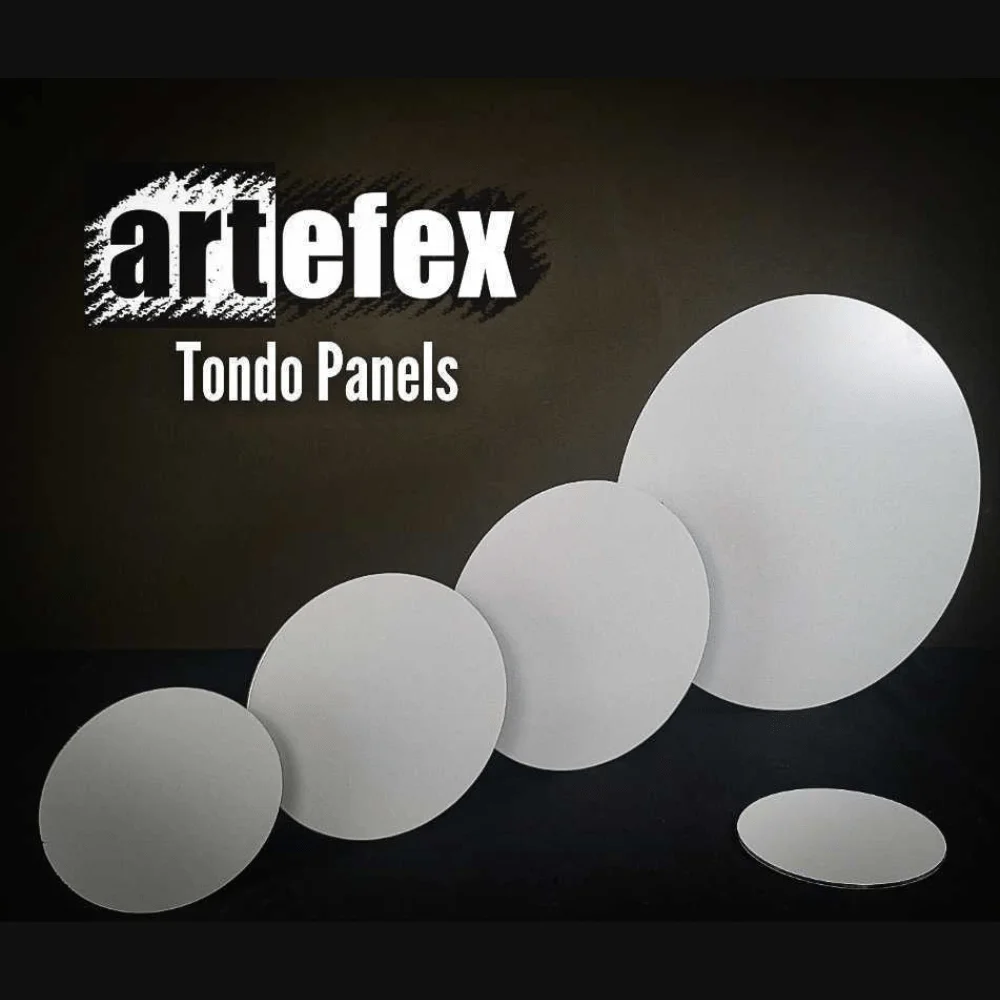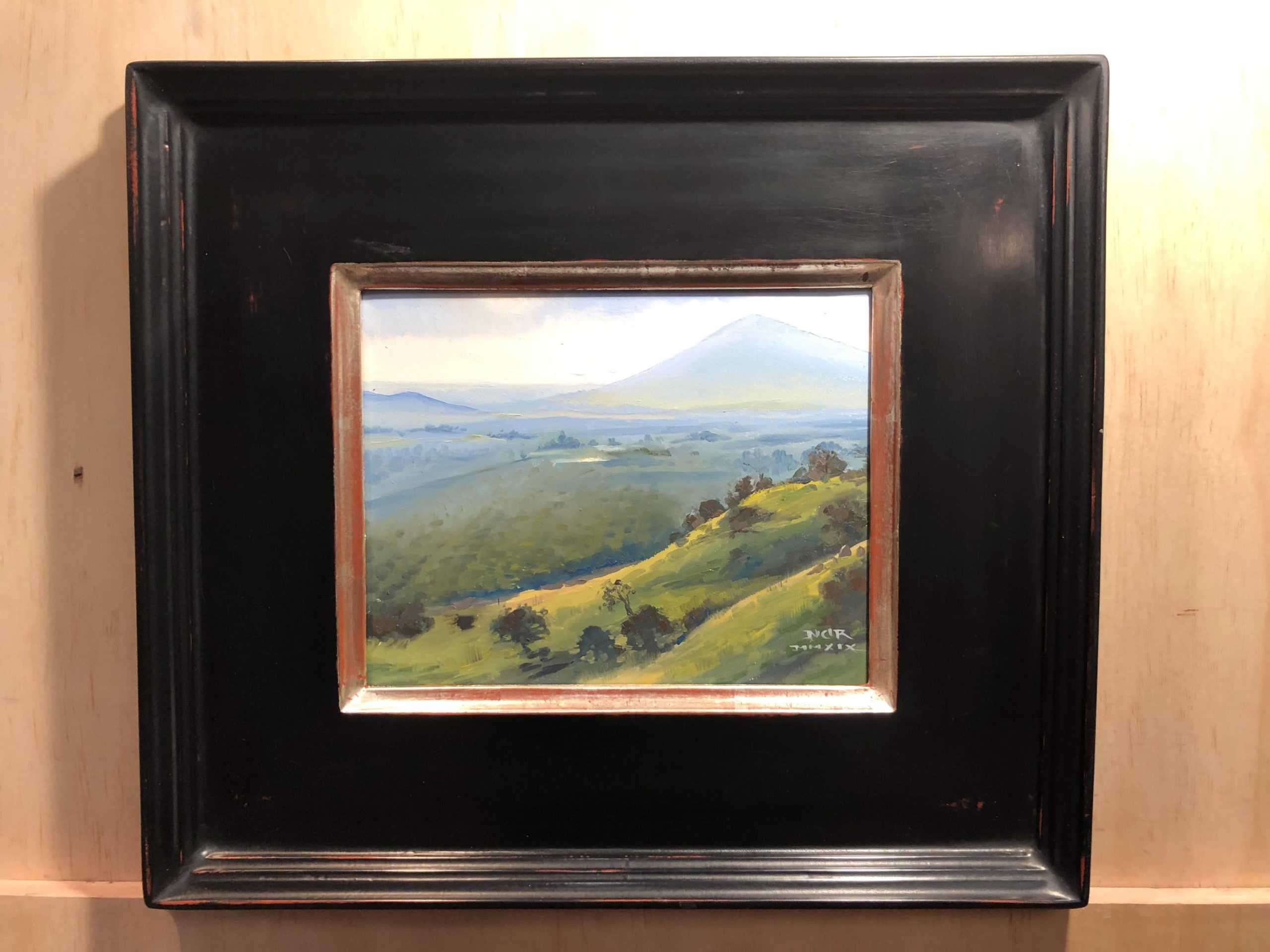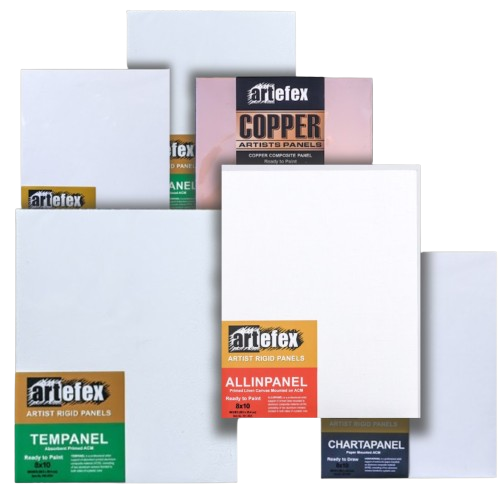Written by Nigel Robertson, founder of Batican Custom Framery.
Follow Nigel’s work on INSTAGRAM As artists, we are living in a really interesting time. I often wonder how the old masters would fair with the technology we have at their fingertips. Would Rembrandt still grind his pigments or would he use Rublev or Old Holland? What would Vermeer do? Would they store their paint in pigs bladders still? I speculate that they would not. What about their supports? Would they still prime raw linen with rabbit skin glue sizing and then apply layers and layers of homemade gesso? I have a feeling they would simplify the process if they could. We have certainly entered into the age of painting information, and thankfully the info on how to do things the right way is right at our fingertips. George O’Hanlon at Natural Pigments has spent many years researching historical painting techniques, and figuring out exactly what works and what does’t. Without him I feel that we would still be pretty lost. I’m sure if Rembrandt and Vermeer were alive today they would be consulting with George as well. Within the craft of painting there are right ways to do things and many many wrong ways. The “Right way” is generally synonymous with “Archival” in the Classical Realism realm of art. We have learned that the “right way” starts with the support. This is the beginning of my segue into why we should have a close look at Artefex Rigid Artist Panels.

Artefex happens to be owned and ran by Anton O’Hanlon, son of George O’Hanlon. Artefex makes panels the right way, verified by George, and that is a huge relief for serious oil painters working in traditional methods. For the past 15 years I have been a working artist, and received academic training at The Florence Academy of Art starting in 2009. We were taught that we should know exactly what goes into our paintings, and I completely agree. We were also taught that we should make as much of our materials from scratch ourselves, which makes me feel conflicted. I truly believe we should be able to make everything from scratch, however, the time involved in research alone to do things the right way could take a lifetime. Trial and error regarding hand making all of the materials one uses as an artist could very well take a lifetime. Ask Dan Graves. I feel as artists we need to be realistic here on this topic. As a lover of the old masters, I romanticized about making everything from scratch, and I did. During my time in Florence I was absolutely enchanted with the concept. Building upon this concept I decided that I even wanted to learn to make frames, so that I could completely actualize my vision for my artwork. And so I did! I ended up making everything I possibly could that went into my artwork with pride. I eventually got burnt out juggling all of the components of being a modern day artist utilizing old master techniques. I ended up going on hiatus from painting and solely focused on making picture frames. I like making frames, and I enjoy that there is a point where the frame is clearly finished. While building my frame business I have been collecting the “Right” art supplies with George’s guidance. Painting has become much more enjoyable, and productive. I actually want to paint more with the stigma of making everything from scratch out of the way. I chose not to be led by dogma. Now for me it is just about doing things the right way, and enjoying painting when I can. The chores of grinding paint, refining oil, prepping supports and making mediums have disappeared. I can now focus on what truly matter: Making a better painting, and not obsessing over what intricate ingredients that I am using. The ingredients absolutely matter, and we know what works and what doesn’t.
I recently started using Artefex panels, and I don’t think I can ever go back to making panels from scratch ever again. Why reinvent the wheel when It comes to supports? I say don’t. I say don’t because as artists we are certainly better off refining our actual artwork. Pushing our drawing and painting skills and refining the subject matter is going to give you far better results than spending time and energy doing it the old master’s way and neglecting the fundamentals. Your time as an artist is extremely valuable, and if you want to make a living as a professional artist, I feel that you are bound to have a hard time if much of the time you spend so much time trying to be like the old masters. It’s romantic, and it can be fun, but are you really using your time as wisely as possible? Many artists forget that the Old Masters had assistants who ground their paints and prepared their surfaces. How else could they achieve so much? What is truly important is that you do it the right way, especially if your career as an artist takes off. You shouldn’t be worried about your paintings falling apart, especually when we have so much access to the scientifically tested information about the creation of archival artwork. I feel the artist’s time is best used focusing solely on the content of their paintings while using the right materials starting with the support. If we handed Vermeer a Lead Primed Linen Canvas bound to a moisture resistant aluminum composite panel and explained it’s properties he would no doubt be overjoyed to create a masterpiece upon it. I speculate that would be his number one choice of support.
Besides the fact that the Artefex panels are done right, they’re also very easy to frame. As a framer and artist I highly recommend these panels to paint on for these reasons. The up front cost us a little more, but they will save you lots of precious time in the long run. Stretched canvas isn’t always square, which can be a pain in the neck for the framer, and the artist when installing the artwork into the frame. I have had clients who ordered specific sizes based on the stretcher bars only to find that their canvas doesn’t fit because the folded canvas corners added a quarter inch to one of the dimensions, and this can be very stressful when deadlines are involved. Artefex panels are cut with excellent accuracy meaning an 8”x10” is going to be an 8”x10” so the fitment into the frame will be a lot less trouble. Installing the work of art can be as simple as just using framers points with a framers point gun. If a more rigid installation is desired, then “offset clips” sometimes called “Z clips” can be used. Both materials can be purchased from Amazon or your local frame shop. Artwork on deep canvases are my least favorite to frame. Finding the correct offset clip to hold the artwork in place can be a challenge, and sometimes the deep canvases require extra fabrication and creativity to safely install the artwork. One of my biggest fears about linen canvas stretched over traditional stretchers is puncturing. Accidents happen, and finding a restorer to repair a torn canvas can be a nightmare. Large format paintings should still be mounted to ACM (Aluminum Composite Materials) and if extra rigidity is desired during the painting process prior to framing, the ACM panel can be adhered to some sort of cradle with cross braces. Artefex makes custom sized panels as well so Anton has you covered. He does a wide variety of combinations of linen canvas and various archival grounds that are proven to last, so it makes no sense to me to DIY everything anymore especially regarding supports.

There are many great framers to choose from to frame your precious works as well, and there is a number of them that I recommend. One thing I am going to discourage is using “Chop and Join” frames for oil paintings, and my reasoning is purely subjective. I personally believe that we should use handmade frames just as the old masters did because the frame is an extension of the artwork, and it should be handmade. Handmade goes with handmade. It looks great and It just makes sense! Keep it handmade and use the right materials. These are pretty straightforward guidelines to follow. If you still want to make everything from scratch because you want to be like the old masters then more power to you! Definitely take a workshop from George on Best Painting Practices. As a Florence Academy Alumni I strongly recommend that you don’t neglect the fundamentals, and as an Artist I strongly recommend you find your intention for making art. Making oil paintings the “right way” is no longer a mystery, and you will be better off doing it correctly.
—
Best wishes,
Nigel Robertson
Batican Custom Framery
2178 N. Pleasant Ave.
Fresno Ca 93705
Ph. 559-708-0589
The Batican Website
 Artefex Copper Artist Panel
Rated 4.8 out of 5$18.00 – $418.00Price range: $18.00 through $418.00
Artefex Copper Artist Panel
Rated 4.8 out of 5$18.00 – $418.00Price range: $18.00 through $418.00 Circular Panels / Rounded Panels
Rated 5 out of 5$8.00 – $103.00Price range: $8.00 through $103.00
Circular Panels / Rounded Panels
Rated 5 out of 5$8.00 – $103.00Price range: $8.00 through $103.00 Artefex Allinpanel Oil Primed Linen Art Panels
Rated 4.93 out of 5$18.00 – $268.00Price range: $18.00 through $268.00
Artefex Allinpanel Oil Primed Linen Art Panels
Rated 4.93 out of 5$18.00 – $268.00Price range: $18.00 through $268.00 Arthur Gain Art Panels
Arthur Gain Art Panels
 Christopher Remmers Workshop Panels
$150.00 – $275.00Price range: $150.00 through $275.00
Christopher Remmers Workshop Panels
$150.00 – $275.00Price range: $150.00 through $275.00
 Tony Ryder Class Panels
$25.00 – $192.00Price range: $25.00 through $192.00
Tony Ryder Class Panels
$25.00 – $192.00Price range: $25.00 through $192.00
 530 Medium - Allinpanel Primed Acrylic Art Panels | 16x20" | 3mm | Panel of the Week
530 Medium - Allinpanel Primed Acrylic Art Panels | 16x20" | 3mm | Panel of the Week
 411 - Oil-Primed Art Panel – Oleopanel (Lead Oil) | 16x20 | 3mm | Panel of The Week
$59.50 – $178.50Price range: $59.50 through $178.50
411 - Oil-Primed Art Panel – Oleopanel (Lead Oil) | 16x20 | 3mm | Panel of The Week
$59.50 – $178.50Price range: $59.50 through $178.50
 533 - Allinpanel Lead Primed Linen | 18x24" | 3mm | Panel of the Week
$112.00 – $336.00Price range: $112.00 through $336.00
533 - Allinpanel Lead Primed Linen | 18x24" | 3mm | Panel of the Week
$112.00 – $336.00Price range: $112.00 through $336.00



















